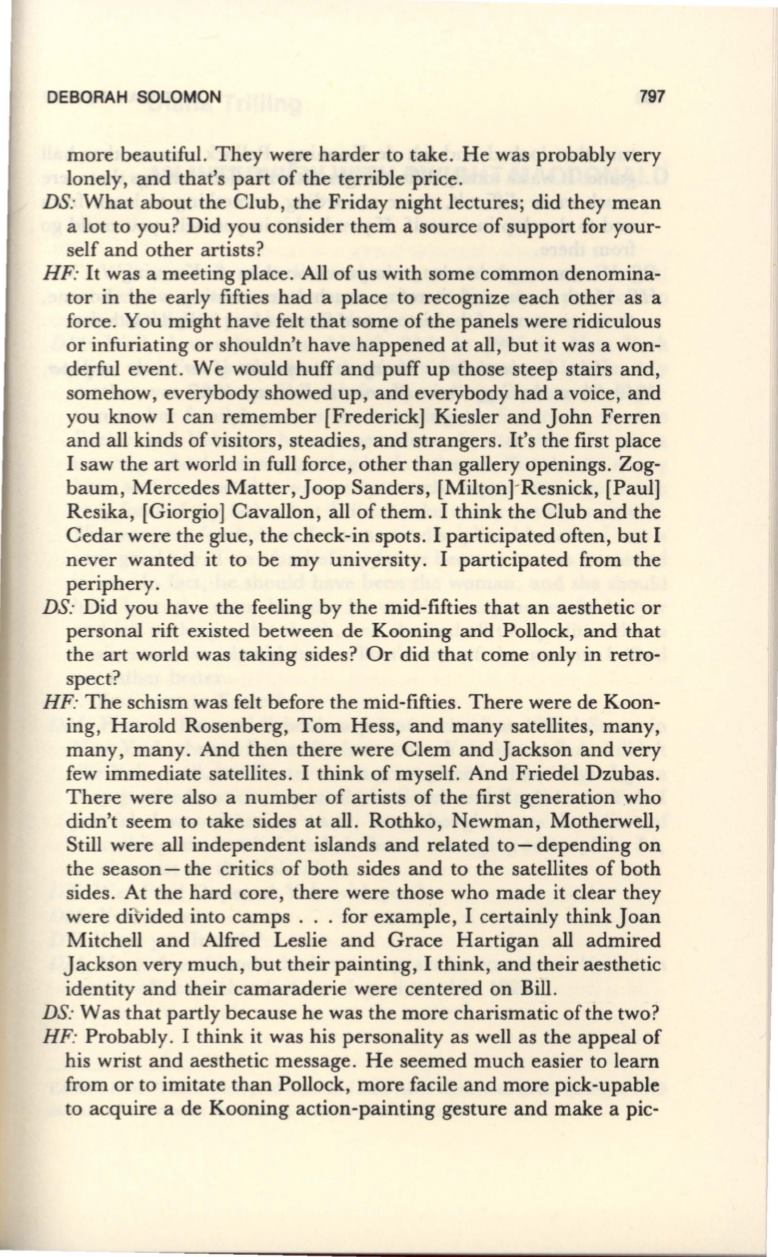
DEBORAH SOLOMON
797
more beautiful. They were harder to take. He was probably very
lonely, and that's part of the terrible price.
DS:
What about the Club, the Friday night lectures ; did they mean
a lot to you? Did you consider them a source of support for your–
self and other artists?
HF:
It was a meeting place . All of us with some common denomina–
tor in the early fifties had a place to recognize each other as a
force . You might have felt that some of the panels were ridiculous
or infuriating or shouldn't have happened at all , but it was a won–
derful event. We would huff and puff up those steep stairs and,
somehow, everybody showed up, and everybody had a voice, and
you know I can remember [Frederick] Kiesler and John Ferren
and all kinds of visitors, steadies, and strangers. It's the first place
I saw the art world in full force, other than gallery openings. Zog–
baum, Mercedes Matter, Joop Sanders, [Milton]-Resnick, [Paul]
Resika , [Giorgio] Cavallon, all of them. I think the Club and the
Cedar were the glue , the check-in spots. I participated often, but I
never wanted it to be my university. I participated from the
periphery.
DS:
Did you have the feeling by the mid-fifties that an aesthetic or
personal rift existed between de Kooning and Pollock, and that
the art world was taking sides? Or did that come only in retro–
spect?
HF:
The schism was felt before the mid-fifties. There were de Koon–
ing, Harold Rosenberg, Tom Hess, and many satellites , many,
many, many . And then there were Clem and Jackson and very
few immediate satellites. I think of myself. And Friedel Dzubas.
There were also a number of artists of the first generation who
didn't seem to take sides at all . Rothko, Newman, Motherwell,
Still were all independent islands and related to- depending on
the season- the critics of both sides and to the satellites of both
sides . At the hard core, there were those who made it clear they
were d1vided into camps . . . for example, I certainly thinkJoan
Mitchell and Alfred Leslie and Grace Hartigan all admired
Jackson very much, but their painting, I think, and their aesthetic
identity and their camaraderie were centered on Bill.
DS:
Was that partly because he was the more charismatic of the two?
HF:
Probably. I think it was his personality as well as the appeal of
his wrist and aesthetic message . He seemed much easier to learn
from or to imitate than Pollock, more facile and more pick-upable
to acquire a de Kooning action-painting gesture and make a pic-


